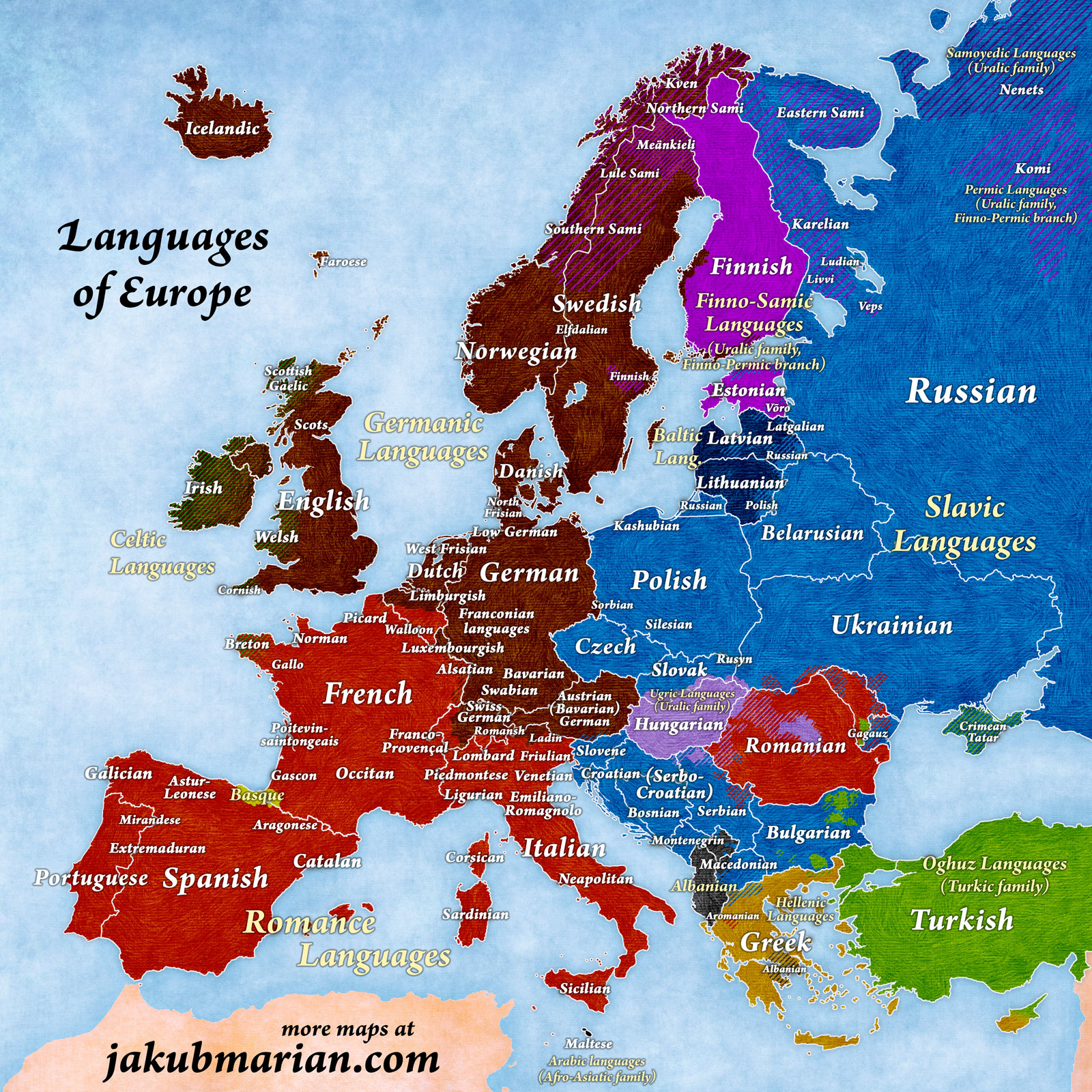The following map shows the language families of Europe (distinguished by colour) and languages within those families. Note that the terms “language” and “dialect” are not mutually exclusive, and some of the languages shown in the map may be considered dialects of others. This is especially true for standard Croatian, Serbian, Bosnian, and Montenegrin, which are commonly considered dialects of one another by linguists, who call them collectively Serbo-Croatian, but each of them is a distinct language (there are some minor differences between them), official (or de facto official) in a different country. Similarly, Macedonian and Bulgarian are sometimes considered dialects of each other.
Nonetheless, every language shown in the map is in some way unique and differs from the other languages significantly in terms of vocabulary, morphology, and phonology (so the languages are not just “the standard language pronounced in a different way”). This is a common misconception caused by the fact that local languages are often minority languages in areas where the majority of speakers speak a variety of the standard language.
For example, the local languages in Northern Italy developed independently from Standard Italian, which is based on the language spoken in Tuscany, and are not considered dialects of Italian. However, all speakers of these languages are also familiar with Standard Italian, which is often spoken with an accent based on the local language. The result is a dialect of Italian, spoken alongside local languages, fooling people from other regions into thinking that these accents are the local languages themselves.
With that in mind, take a look at the map:

A small note about colouring is in order here. Solid colours represent languages spoken by more than 50% of the population, while striped regions represent minority languages spoken by a significant minority. However, minority languages are country-dependent. For example, Romanian is also spoken in the solid pink “Hungarian” area by a small minority, but if stripes were used, most readers would automatically assume that Hungarian is the minority language, not Romanian.
Also note that the term “language family” normally refers to the “top-level” families (such as Indo-European, Turkic, and Uralic), and what the map shows are actually just “branches” of those families. Romance, Germanic, Baltic, Slavic, Hellenic, and Celtic languages all belong to the Indo-European language family, and the top-level family of branches of non-Indo-European languages is always given in parentheses (except for Basque, which is a language family itself).
 Tip: See my list of the
Tip: See my list of the  Most
Most